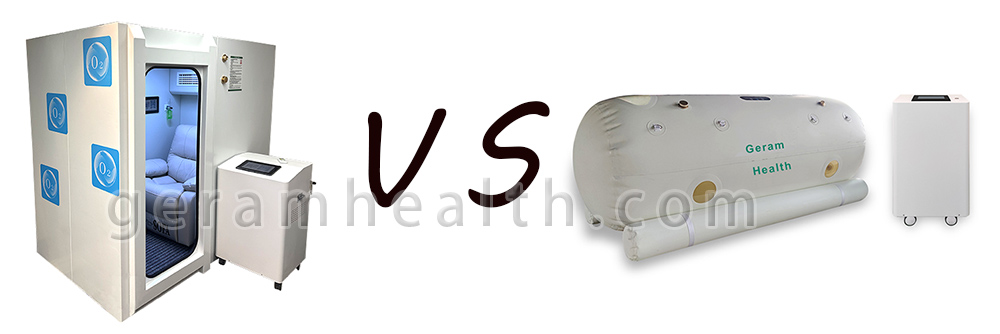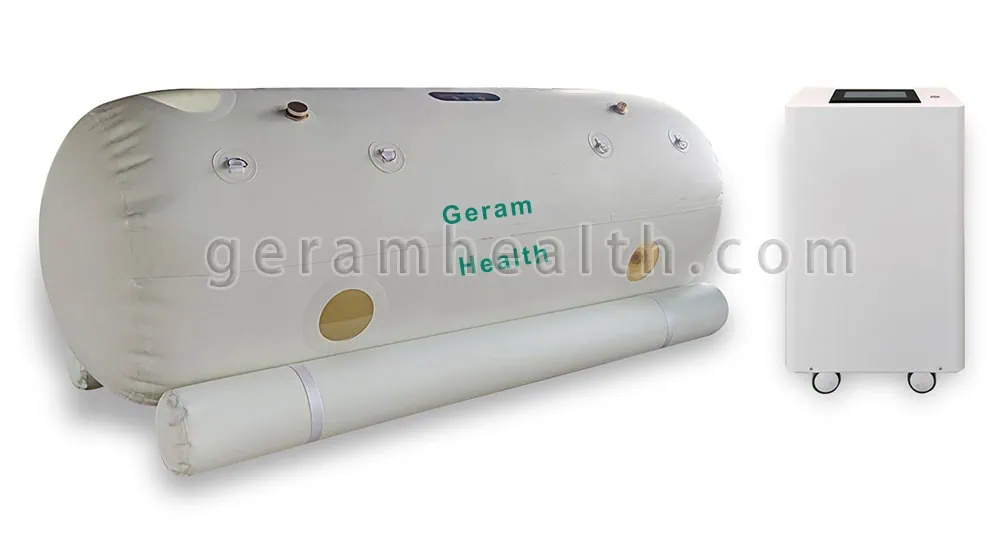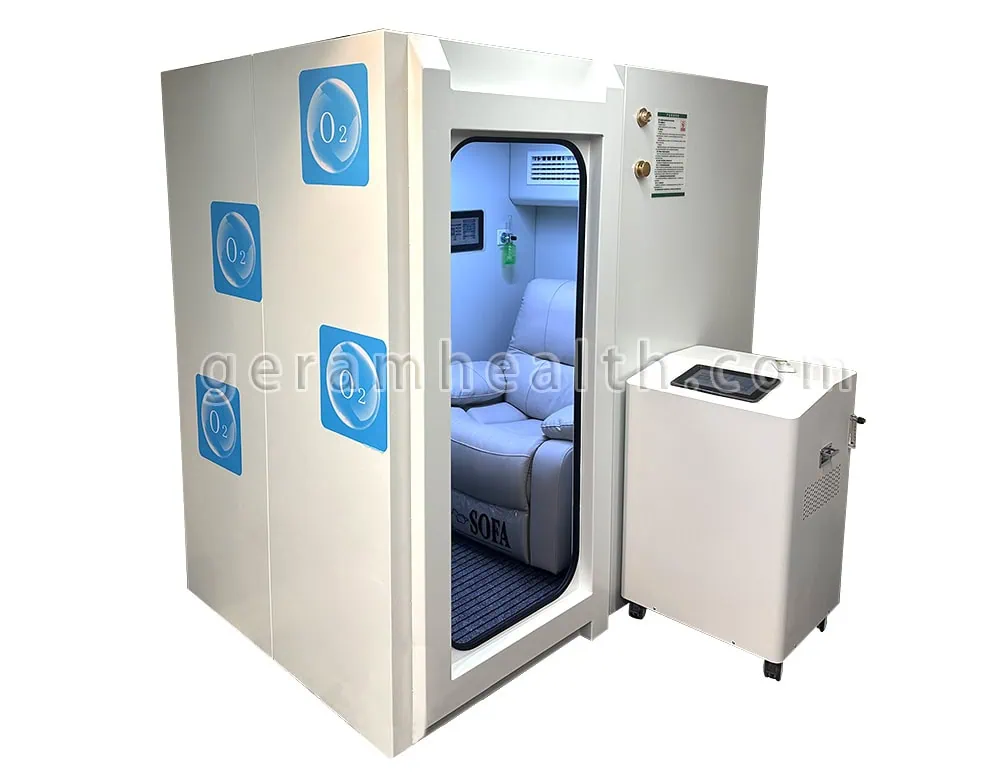In the medical field, hyperbaric therapy involves an alternative healing method where oxygen is combined with high pressure to enhance blood plasma’s oxygen absorption. Before embarking on hyperbaric therapy, it is essential to understand the differences between the two types of hyperbaric treatments: hard and soft hyperbaric chambers. Key factors to consider when choosing a chamber include the material, pressure differences, medical indications, types of treatments, research, and FDA support. In this post, we are dedicated to providing all the necessary information to help you decide which chamber is best for you.

Table of Contents
What is a Soft Hyperbaric Oxygen Chamber (mHBOT)?
A soft hyperbaric chamber, also known as a mild or portable hyperbaric chamber, consists of inflatable bags made from plastic fibers like polyurethane and steel frames. These chambers are of lower quality compared to hard hyperbaric chambers and offer fewer benefits. The primary advantage of hard chambers lies in their ability to deliver higher levels of oxygen and pressure during treatment. Soft chambers provide less than 30% oxygen and a maximum of 1.5 ATA, whereas hard chambers can deliver 100% oxygen and reach up to 6.0 ATA in multiplace chambers.
What is a Hard Hyperbaric Oxygen Chamber (HBOT)?
A hard hyperbaric oxygen chamber can be a monoplace or multiplace chamber. These chambers are more robust and offer more benefits than soft chambers. The main difference between them is the number of people they can accommodate simultaneously. A multiplace chamber is larger and can hold several people sitting or lying down for treatment, while a monoplace chamber is designed for one person to lie down inside an 8-feet long and 3-feet wide chamber. In our company, we primarily use hard-shelled monoplace chambers for treatment.
Pressure Inside the Hyperbaric Chamber
One significant difference between soft and hard hyperbaric chambers is their pressure capabilities. Hard chambers can reach up to 6.0 ATA, while soft chambers can only reach 1.5 ATA. Safe pressure levels range from 1.0 to 3.0 atm, and effective hyperbaric oxygen therapy requires pressures above 1.5 atm. This raises questions about the effectiveness of soft (mild) chambers in promoting healing.
Oxygen Inside the Hyperbaric Chamber
Low-pressure hyperbaric chambers are available in many medical spas and clinics and are even sold for home use since they are not classified as true medical-grade devices. These chambers do not provide 100% pure oxygen like medical-grade hard chambers. A soft chamber operating at 1.3 ATA offers about 20-30% oxygen. At such low pressure and oxygen levels, the therapeutic benefits are minimal. In contrast, a hard oxygen chamber provides 100% pure oxygen at pressures ranging from 1.5 to 3 atm, offering up to three times the benefits of a soft chamber and ensuring in-office safety.
FDA Approved Hyperbaric Chambers
For medical-grade, FDA-approved treatment, it is necessary to use a treatment center with hard hyperbaric chambers. These FDA-approved chambers are sanctioned for 14 specific conditions, with more being added each year. Treatments approved by Medicare and the FDA as safe include:
- Air or Gas Embolism
- Carbon Monoxide Poisoning
- Clostridial Myositis and Myonecrosis (Gas Gangrene)
- Crush Injury, Compartment Syndrome, and Other Acute Traumatic Ischemias
- Decompression Sickness
- Arterial Inefficiencies: Central Retinal Artery Occlusion
- Select Problem Wounds
- Severe Anemia
- Intracranial Abscess
- Necrotizing Soft Tissue Infections
- Osteomyelitis (Refractory)
- Delayed Radiation Injury (Soft Tissue and Bony Necrosis)
- Skin Grafts and Flaps
- Acute Thermal Burn Injury
- Idiopathic Sudden Sensorineural Hearing Loss
Monoplace and multiplace hyperbaric chambers are FDA-approved for these 15 conditions, and additional indications are being studied for approval. Mild hyperbaric chambers are currently FDA-approved only for Acute Elevation Sickness, with no further studies approved by the FDA.
Duration and Frequency of Treatments
Another important feature to consider is the duration and frequency of treatments. Hard hyperbaric oxygen therapy (HBOT) sessions typically last between 60 to 90 minutes, and depending on the condition being treated, multiple sessions may be required. Some conditions might necessitate daily sessions for several weeks, while others may require fewer treatments. In contrast, soft hyperbaric chambers may require longer or more frequent sessions to achieve comparable benefits, if they can be achieved at all due to their lower pressure and oxygen levels.
Cost and Accessibility
Cost and accessibility are also crucial factors. Hard hyperbaric chambers, due to their advanced technology and higher efficacy, are generally more expensive and are primarily found in specialized medical facilities. Treatment costs can be significant but are often covered by insurance for FDA-approved conditions. Soft chambers, while less expensive and more accessible for home use, may not provide the same level of therapeutic benefit and are not typically covered by insurance. It is important to weigh the potential costs against the expected benefits when deciding which type of chamber to use.
Conclusion
Choosing the right hyperbaric oxygen therapy chamber is a critical decision that depends on various factors such as the material and construction of the chamber, the pressure and oxygen levels it can achieve, FDA approval for specific medical conditions, and practical considerations like the duration, frequency, and cost of treatments. Hard hyperbaric oxygen chambers, offering higher pressure and 100% pure oxygen, provide greater therapeutic benefits and are FDA-approved for numerous medical conditions. Although soft chambers are more accessible and less expensive, their lower pressure and oxygen levels may limit their effectiveness. At Geram Health, we are committed to guiding you through these considerations to ensure you select the most appropriate chamber for your needs, ensuring both safety and optimal treatment outcomes.



